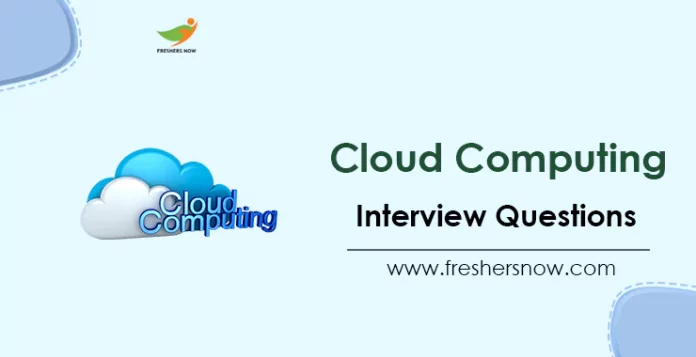
Cloud Computing Interview Questions and Answers: Cloud computing has revolutionized technology access, offering scalable and flexible computing resources over the internet. It enables cost-efficiency and convenience while empowering organizations to focus on their core competencies.
This article provides a comprehensive compilation of the Latest Cloud Computing Interview Questions, including the Top 75 Cloud Computing Interview Questions and Answers. It is a valuable resource for freshers preparing for Cloud Cloud Computing Technical Interview Questions, offering insights to enhance their readiness and excel in the interview process.
★★ Latest Technical Interview Questions ★★
Cloud Computing Interview Questions for Freshers
Prepare for your Cloud Computing interview with confidence using this curated collection of the Top 75 Cloud Computing Interview Questions and Answers. Whether you’re a beginner or experienced, these valuable insights will enhance your knowledge and help you excel in your interview preparation. Stay updated with the latest Cloud Computing interview questions to boost your chances of success.
Top 75 Cloud Computing Interview Questions and Answers
1. What is Cloud Computing, and how does it differ from traditional computing?
Cloud Computing refers to the delivery of computing services over the internet, providing on-demand access to a shared pool of resources such as servers, storage, and applications. Unlike traditional computing, which relies on local infrastructure and servers, Cloud Computing allows users to access and use resources remotely from anywhere at any time, offering scalability, flexibility, and cost-efficiency.
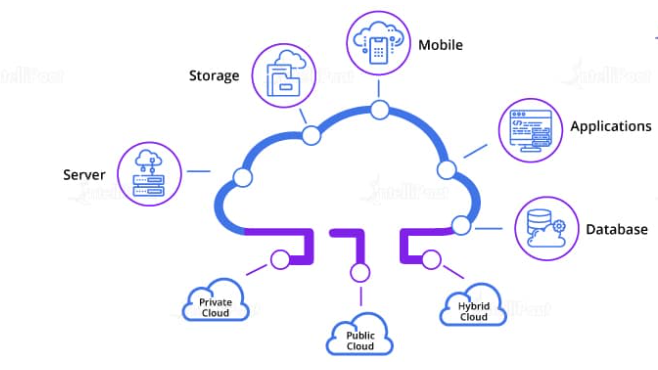
2. Name some key characteristics of Cloud Computing.
Key characteristics of Cloud Computing include on-demand self-service, where users can provision resources as needed without manual intervention. It offers broad network access, allowing access to services over the internet using various devices. Resource pooling enables multiple users to share and utilize a common pool of resources. Cloud Computing also provides rapid elasticity, allowing resources to be scaled up or down quickly based on demand. Lastly, it follows a measured service model, where usage is monitored, controlled, and billed accordingly.
3. In cloud computing what are the different layers?
The different layers of cloud computing are:
- SaaS: Software as a Service allows users to access cloud applications directly without local installations.
- IaaS: Infrastructure as a Service offers hardware infrastructure, including memory and processor speed, in a cloud environment.
- PaaS: Platform as a Service provides a cloud application platform for developers to build and deploy applications.
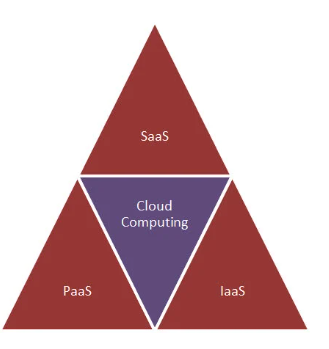
4. What are the different deployment models in Cloud Computing?
The different deployment models in Cloud Computing are:
- Public Cloud: Services are provided over the internet by third-party providers for public use.
- Private Cloud: The cloud infrastructure is dedicated to a single organization and may be managed internally or by a third party.
- Hybrid Cloud: Combination of public and private clouds, offering flexibility and data integration between both environments.
- Multi-Cloud: Utilizing multiple cloud service providers for different workloads or specific business requirements.
5. Difference between public cloud and private cloud
| Public Cloud | Private Cloud |
|---|---|
| Services and infrastructure are shared among multiple organizations or users. | Services and infrastructure are dedicated to a single organization. |
| Managed and operated by third-party service providers. | Managed and operated by the organization itself or a third-party provider. |
| Lower upfront costs and pay-as-you-go pricing model. | Higher upfront costs and more control over the infrastructure. |
| Offers scalability, flexibility, and ease of use. | Provides greater control over security and compliance. |
6. How does Resource Replication take place in Cloud Computing?
Resource replication involves creating multiple instances of an IT resource to improve availability and performance. Virtualization technology is utilized to implement this mechanism, allowing for the replication of cloud-based IT resources.
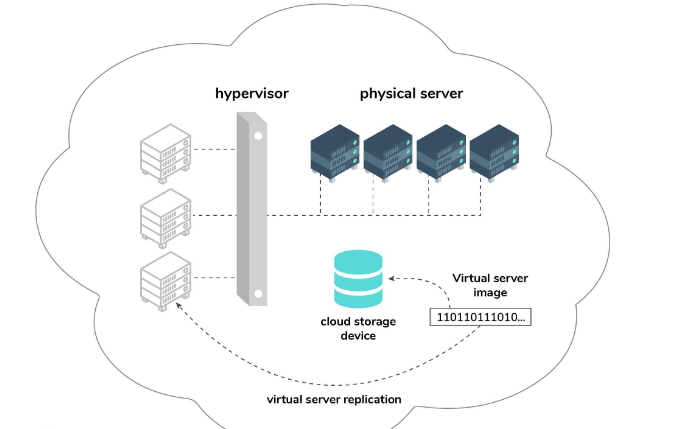
7. Explain the difference between public, private, and hybrid clouds.
Public clouds are owned and operated by third-party providers, serving multiple organizations or individuals over the Internet. Private clouds, on the other hand, are dedicated to a single organization and may be hosted on-premises or externally. Hybrid clouds combine elements of both public and private clouds, allowing data and applications to be shared between them based on specific requirements or workload needs.
8. What are the essential components of a Cloud Computing architecture?
The essential components of a Cloud Computing architecture include:
- User/Client: The individual or entity accessing the cloud services.
- Applications: Software programs or services that run on the cloud infrastructure.
- Data Center: The physical or virtual infrastructure that houses and manages the cloud resources.
- Virtualization: The technology that enables the creation of virtual instances of computing resources.
- Infrastructure: The underlying hardware and software components required to support cloud services.
- Service Provider: The entity responsible for delivering and managing the cloud services.
9. Difference between Infrastructure as a Service (IaaS) and Platform as a Service (PaaS)
| IaaS | PaaS |
|---|---|
| Provides virtualized computing resources like virtual machines, storage, and networks. | Offers a complete development and deployment platform with pre-configured environments. |
| Users have more control and responsibility over managing the operating systems and applications. | Users focus on application development and deployment, while the underlying infrastructure is managed by the provider. |
| Offers flexibility and scalability, allowing users to customize and configure their infrastructure. | Provides a simplified development experience with built-in scalability and automated management. |
| Users are responsible for patching, updating, and securing the operating systems and applications. | Platform providers handle underlying infrastructure management, including patching and security. |
10. Define Infrastructure as a Service (IaaS) and provide an example.
Infrastructure as a Service (IaaS) is a cloud computing model where virtualized computing resources such as virtual machines, storage, and networks are provided over the internet. Users can provision and manage these resources as needed. An example of IaaS is Amazon Web Services (AWS) Elastic Compute Cloud (EC2), which offers virtual servers that can be scaled up or down based on demand.
11. What is the syntax for creating a load balancer in the Google Cloud Platform using the gcloud command?
The syntax for creating a load balancer in Google Cloud Platform using the gcloud command is as follows:
gcloud compute target-pools create <TARGET_POOL_NAME> --region=<REGION> --http-health-check=<HEALTH_CHECK_NAME>
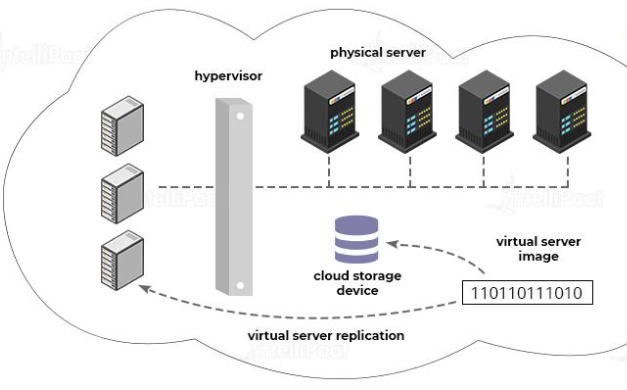
12. What is multi-tenancy in Cloud Computing?
Multi-tenancy refers to the ability of cloud infrastructure to serve multiple users or tenants while keeping their data and resources isolated and secure.
13. What is the role of API (Application Programming Interface) in Cloud Computing?
APIs in Cloud Computing enable applications to interact with cloud services and access resources programmatically, allowing for automation and integration.
14. What is the difference between public cloud, private cloud, and hybrid cloud?
- Public cloud: Services and infrastructure are provided by third-party providers and accessible over the Internet.
- Private cloud: Services and infrastructure are dedicated to a single organization and may be located on-premises or in a private data center.
- Hybrid cloud: Combines both public and private cloud resources, allowing organizations to leverage the benefits of both environments.
15. What are the uses of APIs in cloud services?
- APIs (Application Programming Interfaces) eliminate the need for writing complete programs.
- They enable communication between one or more applications by providing instructions.
- APIs simplify application development and facilitate the integration of cloud services with other systems.
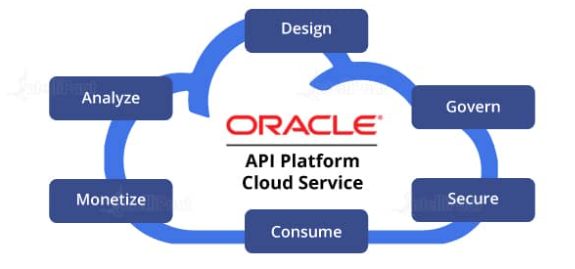
16. How does Cloud Computing support scalability?
Cloud Computing provides the ability to scale resources up or down based on demand, allowing organizations to dynamically adjust their infrastructure to handle varying workloads.
17. Difference between cloud storage and traditional on-premises storage
| Cloud Storage | Traditional On-Premises Storage |
|---|---|
| Data is stored and accessed over the internet on remote servers. | Data is stored and accessed locally within the organization’s infrastructure. |
| Offers virtually unlimited scalability and storage capacity. | Storage capacity is limited by the physical infrastructure and hardware. |
| Pay-as-you-go pricing model based on usage and storage capacity. | Requires upfront capital expenditure for hardware and ongoing maintenance costs. |
| Redundancy and data replication are managed by the cloud service provider. | Redundancy and data replication are the responsibility of the organization. |
18. What is the role of load balancing in Cloud Computing?
Load balancing in Cloud Computing evenly distributes incoming network traffic across multiple servers or resources, optimizing resource utilization and ensuring high availability and scalability.
19. What are the advantages of using cloud storage in Cloud Computing?
The advantages of cloud storage include scalability, data durability, accessibility from anywhere, cost-effectiveness, and built-in redundancy for data protection.
20. Explain the concept of disaster recovery in Cloud Computing.
Disaster recovery in Cloud Computing involves having a plan and infrastructure in place to recover and restore systems and data in the event of a major outage or disaster, ensuring business continuity.
21. What are the security considerations in Cloud Computing?
Security considerations in Cloud Computing include data encryption, access controls, vulnerability management, identity management, and compliance with regulations and industry standards.
22. Difference between horizontal scaling and vertical scaling in cloud computing
| Horizontal Scaling | Vertical Scaling |
|---|---|
| Involves adding more instances or nodes to distribute the workload. | Involves adding more resources (CPU, memory, etc.) to an existing instance or node. |
| Increases the capacity of the system by handling more concurrent requests. | Increases the performance of the system by handling larger workloads on a single instance. |
| Provides better fault tolerance and higher availability. | Enhances the system’s performance and processing power. |
| Requires load balancing and coordination between multiple instances. | Does not require load balancing as the workload is handled by a single instance. |
23. What is the difference between horizontal and vertical scaling in Cloud Computing?
Horizontal scaling refers to adding more instances of resources, such as servers, to distribute the workload, while vertical scaling involves increasing the capacity of individual resources, such as upgrading a server with more powerful hardware.
24. How does Cloud Computing ensure data privacy and compliance?
Cloud Computing providers implement data privacy measures, such as encryption, access controls, and data segregation, and adhere to industry regulations and compliance standards to protect sensitive data.
25. What is the difference between cloud computing and traditional hosting?
Cloud computing offers on-demand scalability, flexibility, and pay-as-you-go pricing, while traditional hosting typically involves fixed resources, limited scalability, and upfront payment models.
26. Difference between serverless computing and traditional server-based architectures
| Serverless Computing | Traditional Server-Based Architectures |
|---|---|
| Abstracts away the infrastructure management, allowing developers to focus on code. | Requires managing and provisioning servers and infrastructure resources. |
| Automatically scales based on the incoming workload and only charges for actual usage. | Requires provisioning and scaling servers manually, often leading to overprovisioning. |
| Event-driven functions are executed on-demand without the need for persistent servers. | Requires maintaining and managing persistent server instances. |
| Reduced operational overhead and improved time-to-market for applications. | Requires more operational overhead, including server maintenance and management. |
27. What are the key challenges in Cloud Computing?
Key challenges in Cloud Computing include data security and privacy concerns, vendor lock-in, regulatory compliance, network and latency issues, and managing cloud costs.
28. What is the role of containers in Cloud Computing?
Containers in Cloud Computing provide a lightweight and isolated environment for deploying and running applications, enabling efficient resource utilization, portability, and scalability.
29. Difference between cloud backup and cloud disaster recovery
| Cloud Backup | Cloud Disaster Recovery |
|---|---|
| Focuses on creating copies of data for backup and restore purposes. | Focuses on the continuity of business operations during a disaster or outage. |
| Protects against data loss and allows for data recovery in case of accidental deletion or system failure. | Ensures the availability and recovery of critical applications and services in case of a disaster. |
| Often performed at regular intervals to create incremental or differential backups. | Requires real-time or near-real-time replication of data and systems to a secondary location. |
| Typically offers longer retention periods and versioning of backups. | Requires quick failover and failback processes to minimize downtime and data loss. |
30. Explain the concept of serverless computing in Cloud Computing.
Serverless computing, also known as Function as a Service (FaaS), allows developers to focus on writing code without managing infrastructure. It scales automatically, charges based on usage, and is ideal for event-driven and microservices architectures.
31. What is cloud bursting in Cloud Computing?
Cloud bursting in Cloud Computing involves scaling an application’s workload from a private cloud to a public cloud to handle temporary spikes in demand, ensuring optimal performance and resource utilization.
32. Difference between cloud computing and edge computing
| Cloud Computing | Edge Computing |
|---|---|
| Centralized computing and data storage in remote data centers. | Distributed computing and data processing at the edge of the network, closer to the data source. |
| Data is transmitted to and processed in the cloud for analysis and storage. | Data is processed locally, reducing latency and enabling real-time or near-real-time applications. |
| Suitable for applications with less stringent latency requirements. | Ideal for latency-sensitive applications and use cases that require immediate processing. |
| Offers scalability, flexibility, and the ability to handle massive workloads. | Provides localized processing and reduced dependency on the internet connection. |
33. What are the key considerations for cloud migration?
Key considerations for cloud migration include assessing application compatibility, data transfer, and security, choosing the right cloud provider, planning for downtime and data migration, and ensuring regulatory compliance.
34. What is serverless architecture in Cloud Computing?
Serverless architecture in Cloud Computing allows developers to focus on writing and deploying code without managing or provisioning servers. It provides a pay-as-you-go model, scaling automatically based on demand.
35. Difference between cloud bursting and cloud migration
| Cloud Bursting | Cloud Migration |
|---|---|
| Involves extending the capacity of an application by utilizing additional cloud resources. | Relocates an application, data, or infrastructure from on-premises to the cloud environment. |
| Enables handling peak workloads by seamlessly scaling out to the cloud. | Involves transitioning from an existing environment to a new cloud-based infrastructure. |
| Requires a hybrid cloud architecture and coordination between on-premises and cloud resources. | Requires careful planning and data transfer to ensure a smooth transition to the cloud. |
| Allows cost savings by utilizing cloud resources only when additional capacity is needed. | Offers the benefits of cloud computing, such as scalability and flexibility, for the entire application. |
36. What are the key considerations for selecting a cloud provider?
Key considerations for selecting a cloud provider include reliability, performance, security measures, pricing models, data sovereignty, support and SLAs (Service Level Agreements), and integration capabilities.
37. How does Cloud Computing enable cost savings for organizations?
Cloud Computing offers cost savings by eliminating the need for upfront hardware investments, reducing maintenance and operational costs, and providing scalability and pay-as-you-go pricing models.
38. Difference between a cloud service provider and a cloud service consumer
| Cloud Service Provider | Cloud Service Consumer |
|---|---|
| Offers cloud-based services, infrastructure, or platforms to end-users or organizations. | Utilizes the services, infrastructure, or platforms provided by the cloud service provider. |
| Responsible for provisioning, managing, and maintaining the cloud infrastructure and services. | Consumes the cloud services and is responsible for configuring and managing their own applications or workloads. |
| Provides service-level agreements (SLAs) and ensures the availability, scalability, and security of the cloud services. | Relies on the cloud service provider to meet SLAs and maintain the performance and security of the cloud services. |
| Examples include Amazon Web Services (AWS), Microsoft Azure, Google Cloud Platform, etc. | Examples include organizations or individuals using cloud services for their applications or workloads. |
39. What is the role of virtual private networks (VPNs) in Cloud Computing?
Virtual private networks (VPNs) in Cloud Computing provide secure and encrypted connections between an organization’s on-premises network and cloud resources, ensuring data confidentiality and integrity.
40. What is the role of orchestration in Cloud Computing?
Orchestration in Cloud Computing involves automating and managing the deployment, configuration, and coordination of multiple cloud resources to ensure smooth and efficient operations.
41. What are the key characteristics of a cloud-native application?
Cloud-native applications are designed to run optimally in a cloud environment, leveraging microservices architecture, containerization, scalability, and automation.
42. Difference between hybrid cloud and multi-cloud architecture
| Hybrid Cloud | Multi-Cloud Architecture |
|---|---|
| Combines both public and private cloud infrastructures to achieve specific goals. | Utilizes multiple cloud service providers to distribute workloads and leverage different services. |
| Offers flexibility, allowing organizations to keep sensitive data on private infrastructure while using the public cloud for scalability. | Provides the ability to choose different cloud services based on specific requirements or best-fit solutions. |
| Requires coordination and integration between the private and public cloud environments. | Involves managing multiple cloud providers independently or through orchestration tools. |
| Provides greater control over data sovereignty, compliance, and security. | Offers redundancy and avoids vendor lock-in by leveraging the strengths of different cloud providers. |
43. Provide the syntax for deploying an application to Heroku using the Heroku CLI.
The syntax for deploying an application to Heroku using the Heroku CLI is as follows:
heroku create
git push heroku master
44. What is the role of identity and access management (IAM) in Cloud Computing?
IAM in Cloud Computing ensures that only authorized users and services can access resources, providing authentication, authorization, and fine-grained access control.
45. What are the different deployment models in Cloud Computing?
- Public cloud: Services are available to the public over the Internet.
- Private cloud: Services are dedicated to a single organization and may be managed internally or by a third-party provider.
- Community cloud: Services are shared by multiple organizations with common requirements.
- Hybrid cloud: Combines two or more deployment models, allowing for flexibility and data placement control.
46. How does Cloud Computing handle data backup and recovery?
Cloud Computing providers offer backup and recovery mechanisms, including regular backups, snapshotting, and replication across multiple data centers, ensuring data durability and availability.
47. What is Platform as a Service (PaaS)? Give an example.
Platform as a Service (PaaS) is a cloud computing model that provides a platform and environment for developing, testing, and deploying applications. It eliminates the need for managing the underlying infrastructure, allowing developers to focus on application development. An example of PaaS is Microsoft Azure App Service, which offers a platform for building and hosting web applications, mobile app backends, and RESTful APIs.
48. Explain Software as a Service (SaaS) and provide an example.
Software as a Service (SaaS) is a cloud computing model where software applications are provided over the internet, allowing users to access and use the applications without the need for installation or local infrastructure. The applications are typically accessed through a web browser. Examples of SaaS include Salesforce, Microsoft Office 365, and Google Workspace (formerly G Suite).
49. What are the advantages of using Cloud Computing?
The advantages of using Cloud Computing include:
- Scalability: Resources can be scaled up or down based on demand, ensuring optimal resource utilization.
- Flexibility: Users can access cloud services from anywhere using various devices with an internet connection.
- Cost Efficiency: Cloud services follow a pay-as-you-go model, where users only pay for the resources they consume, reducing upfront costs.
- Reliability: Cloud providers typically offer high availability and redundancy, ensuring service continuity.
- Security: Cloud providers implement robust security measures to protect data and infrastructure.
- Collaboration: Cloud services enable easy collaboration and sharing of data and resources among users.
50. What are the potential challenges or concerns in adopting Cloud Computing?
Some challenges or concerns in adopting Cloud Computing include:
- Data Security: Protecting sensitive data in the cloud and ensuring compliance with regulations.
- Vendor Lock-in: Potential dependency on a specific cloud provider and limited portability of applications or data.
- Performance and Latency: Network connectivity and response times may impact performance for certain applications.
- Data Governance: Maintaining control and visibility over data stored in the cloud.
- Compliance and Legal Issues: Ensuring compliance with industry-specific regulations and data privacy laws.
- Service Reliability: Dependency on the cloud provider’s infrastructure and potential service disruptions.
- Cost Management: Monitoring and optimizing costs associated with cloud resource usage.
- Migration and Integration: Challenges in migrating existing applications and integrating them with cloud services.
51. What is the difference between horizontal scaling and vertical scaling in Cloud Computing?
Horizontal scaling, also known as scaling out, involves adding more instances of resources such as servers to distribute the workload. Vertical scaling, or scaling up, involves increasing the capacity of individual resources, such as upgrading a server with more memory or processing power.
52. Explain the concept of elasticity in Cloud Computing.
Elasticity in Cloud Computing refers to the ability to dynamically scale resources up or down based on demand. It allows organizations to easily add or remove resources to match workload fluctuations, ensuring optimal resource utilization and cost efficiency.
53. What is the role of load balancing in Cloud Computing?
Load balancing evenly distributes incoming network traffic across multiple servers or resources to prevent overloading and improve performance and availability. It ensures that each server handles a fair share of the workload, enhancing scalability and fault tolerance.
54. What is the difference between public IP and private IP in Cloud Computing?
A public IP address is globally unique and accessible over the internet, allowing communication with external networks and devices. In contrast, a private IP address is used within a private network and is not reachable from the internet. It enables communication within a specific network or among connected resources.
55. How does Cloud Computing ensure data backup and disaster recovery?
Cloud Computing providers typically offer backup and disaster recovery solutions. Data is replicated and stored across multiple servers or data centers to ensure redundancy and fault tolerance. In the event of a disaster, data can be restored from backups or failover to alternate resources or regions.
56. Explain the syntax for creating a network interface in AWS using CloudFormation.
The syntax for creating a network interface in AWS using CloudFormation is as follows:
Resources:
MyNetworkInterface:
Type: "AWS::EC2::NetworkInterface"
Properties:
Description: "My network interface"
SubnetId: "subnet-12345678"
GroupSet:
- "sg-12345678"
57. What is the difference between synchronous and asynchronous communication in Cloud Computing?
Synchronous communication involves real-time interactions where the sender waits for a response before proceeding. Asynchronous communication allows the sender to continue with other tasks without waiting for a response, making it suitable for scenarios where immediate responses are not necessary.
58. How does Cloud Computing support high availability and fault tolerance?
Cloud Computing providers employ various techniques such as redundancy, load balancing, and automated failover to ensure high availability and fault tolerance. By distributing resources across multiple servers and data centers, service disruptions can be minimized, and continuous availability can be maintained.
59. What are the common security measures in Cloud Computing?
Common security measures in Cloud Computing include encryption of data in transit and at rest, access control mechanisms, identity and authentication management, regular security audits and assessments, and compliance with industry standards and regulations.
60. Explain the concept of serverless computing in Cloud Computing.
Serverless computing, also known as Function as a Service (FaaS), allows developers to focus on writing code without managing the underlying infrastructure. Functions are executed in a serverless environment, automatically scaling based on demand, and users only pay for the actual resource consumption.
61. What is the role of containers in Cloud Computing?
Containers in Cloud Computing provide a lightweight and portable environment for deploying and running applications. They encapsulate the application and its dependencies, making it easier to package, deploy, and manage applications across different environments.
62. What is server virtualization in Cloud Computing?
Server virtualization in Cloud Computing involves dividing a physical server into multiple virtual machines (VMs) or instances. Each VM operates as an independent server with its own operating system, enabling efficient utilization of hardware resources and facilitating flexible deployment and management.
63. Explain the concept of auto-scaling in Cloud Computing.
Auto-scaling in Cloud Computing refers to the ability to automatically adjust the number of resources allocated to an application based on predefined conditions. It ensures that the application can handle varying levels of workload and maintains optimal performance and resource utilization.
64. What is a CDN (Content Delivery Network) in Cloud Computing?
A Content Delivery Network (CDN) in Cloud Computing is a geographically distributed network of servers that cache and deliver content to users based on their geographic location. It reduces latency and improves the delivery speed of content, enhancing the user experience.
65. What is the role of a hypervisor in Cloud Computing?
A hypervisor, also known as a virtual machine monitor, is responsible for creating and managing virtual machines in Cloud Computing. It abstracts and controls the underlying hardware, allowing multiple VMs to run on a single physical server and enabling efficient resource allocation.
66. How does Cloud Computing ensure data privacy?
Cloud Computing providers employ various security measures such as encryption, access controls, and data segregation to ensure data privacy. They adhere to industry standards and regulations to protect sensitive data and provide mechanisms for customers to manage and control their data.
67. What are the different service models in Cloud Computing?
The different service models in Cloud Computing are:
- Infrastructure as a Service (IaaS)
- Platform as a Service (PaaS)
- Software as a Service (SaaS)
- Function as a Service (FaaS) or Serverless Computing
68. What is the role of DevOps in Cloud Computing?
DevOps in Cloud Computing combines development (Dev) and operations (Ops) practices to streamline the software development and deployment process. It focuses on collaboration, automation, and continuous integration and delivery, enabling faster and more efficient software development and deployment in the cloud.
69. Explain the concept of data sovereignty in Cloud Computing.
Data sovereignty in Cloud Computing refers to the legal and regulatory requirements related to the storage, processing, and transfer of data across different jurisdictions. It ensures that data is subject to the laws and regulations of the country or region where it is located.
70. How does Cloud Computing impact the environment?
Cloud Computing can have a positive impact on the environment by reducing energy consumption and carbon emissions. By consolidating resources and optimizing utilization, cloud providers can achieve higher energy efficiency compared to traditional on-premises data centers.
71. Explain the syntax for creating a virtual machine in AWS using the AWS CLI.
To create a virtual machine using the AWS CLI, the syntax is as follows:
aws ec2 run-instances --image-id <AMI_ID> --instance-type <INSTANCE_TYPE> --key-name <KEY_PAIR_NAME> --subnet-id <SUBNET_ID>
72. What is the syntax for deploying an Azure Resource Manager template using PowerShell?
To deploy an Azure Resource Manager template using PowerShell, you can use the following syntax:
New-AzResourceGroupDeployment -ResourceGroupName <RESOURCE_GROUP_NAME> -TemplateFile <TEMPLATE_FILE_PATH> -TemplateParameterFile <PARAMETER_FILE_PATH>
73. Provide the syntax for creating a storage bucket in Google Cloud Storage using the gsutil command.
The syntax for creating a storage bucket in Google Cloud Storage using the gsutil command is as follows:
gsutil mb -p <PROJECT_ID> -c <STORAGE_CLASS> -l <LOCATION> gs://<BUCKET_NAME>
74. Explain the syntax for creating a function in AWS Lambda using Node.js.
The syntax for creating a function in AWS Lambda using Node.js is as follows:
exports.handler = function(event, context, callback) {
// Function code goes here
};
75. What is the syntax for launching a Kubernetes pod using the kubectl command?
To launch a Kubernetes pod using the kubectl command, you can use the following syntax:
kubectl run <POD_NAME> --image=<IMAGE_NAME> --port=<CONTAINER_PORT> --replicas=<REPLICA_COUNT>
Enhance your Cloud Computing Technical Interview Questions preparation with the Top 75 Cloud Computing interview questions and answers. Stay updated and expand your knowledge by following us at freshersnow.com. Excel in your upcoming Cloud Computing job interview with confidence.



